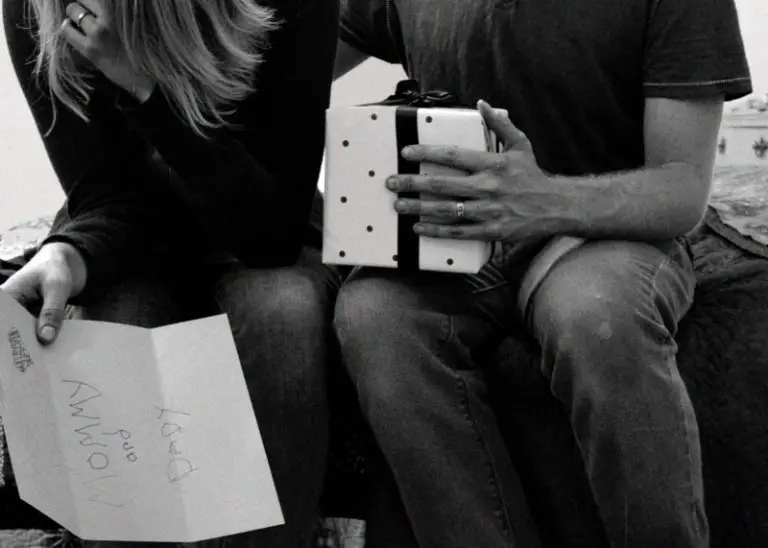I am lying in my bed. Mom tucked me in just a few moments ago and both she and my father wished me good night before leaving the room. But there is no sleep to be had here. First, even as a child I can read the tension between my parents. But worse, “The Shadow” has arrived. And it has something to ask me.
I’m in the middle of experiencing The Severance Theory: Welcome to Respite. It’s the first entry of a 4-chapter immersive story by CoAct Productions (creators of last year’s The Sideshow) and I’m currently living within the character of Alex. I describe my experience that way because that’s how the creators of the show have written this story – the audience member steps into the central persona that everyone else circles around.
But the experience doesn’t begin in childhood. Audience members first step into Alex as an adult who has just inherited their mother’s home after her death. A quick meeting with the realtor (performed with just the right level of professional insincerity by Danielle Levesque) leads to the audience member being left alone with a backpack full of child Alex’s belongings. Most important to those belongings is a message about the past, one that actually sends the audience back to that childhood age.

It’s at this point that Welcome to Respite shows its greatest strengths. Kelly Pierre appears as the previously mentioned mother and literally envelops you into the reality that she creates. Pierre inhabits the mother role so completely that it practically becomes real, making it easy for the audience to respond as the child they should be. If the show were entirely this interaction, it would stand as one of the better interaction-driven experiences this year. But there is a deeper story going on here and it begins to show itself in subtle ways as the Alex’s father shows up. As the dad, Payden Ackerman brings a gentle and genial nature to the role while also somehow managing to include a beautiful nuance of a frightened, worried parent hidden beneath the smiles.
Between the two parents, a dark secret rises within the show. There are signs, hints and echoes dropped constantly through the evening. When the audience-as-Alex is asked about a burn mark or the parents edge too close to a well-worn argument between themselves, it becomes clear that something has happened before this night, something that has hurt this entire family’s existence. But what was it?
In Welcome to Respite, answers aren’t easy to find. Both parents ask Alex questions constantly – but they are questions that we can’t answer, that we don’t have the information to answer. This strategy forces the audience to either say they don’t know or make up an answer on the spot. Many immersive productions use this sort of strategy to help audience members invest in the story, because once an audience member answers a question with specifics, they become more focused in the interactions. Here, however, the strategy is used for a different purpose. The parents ask questions that have a ‘correct’ answer and the fact that we can’t give them that answer becomes part of the story. Our inability to recall events and correct answers is, itself, part of what is happening to this family. It’s part of what is happening to Alex.

The word “respite” is defined in two major ways:
- a short period of rest or relief from something difficult or unpleasant
- a brief period of delay for a punishment, obligation, etc.
Welcome to Respite is very aptly named, because what audience members experience here covers both definitions perfectly. Although the parents seem happy, there are cracks in their relationship that get shown to Alex through a cleverly staged ‘accident’ of spacing. Whatever is going to happen with this relationship, this respite will soon be over.
But there is also something more potentially dangerous running underneath this story – something where obligation is a key factor. For this is truly a show about DID (dissociative identity disorder) and Alex (and by extension the audience member) appears to have it. Both in the ‘present’ of Alex’s inheritance and in the ‘past’ of Alex’s childhood, the signs are clear. Of all the things the audience doesn’t know, the biggest one centers on a promise – one we’re told we cannot, should not, and must not forget. Except, of course, the audience member has done exactly that, because we never knew it at all. It’s the setup for a darker, more painful story to come and the way it was created was very smart narratively and structurally.
As this is a story that narratively deals with a specific type of mental issue, the question of how that issue is handled also needs to be addressed. Attempting to dramatize mental states of any kind can be exceptionally hard to do well. Stories often take the easy route by turning a mental state such as DID into the show’s main source of conflict. Many pieces of entertainment in the past have done that with different mental issues such as anxiety or depression, using the illness as a crutch or poor excuse for creating narrative tension. Welcome to Respite mostly handles the matter with respect, although the focus is more on the family’s relationships than anything else. There are a few moments, however, where the audience experiences aspects of Alex’s DID directly. Those moments walk the edge of becoming melodramatic through some deliberate use of light, sound and costuming that creates a strange sense of isolation. While the goal was clearly to simulate a dissociative moment, the choices in staging felt a little unclear and forced.
Welcome to Respite never crosses the line into being problematic, fortunately. But they did begin a story in which future chapters may focus more directly on how Alex experiences the world. Should that be the plan, finding ways to represent DID accurately will hopefully remain CoAct Productions’ goal. As entertainment continues to represent different perspectives in an ever more humane manner, CoAct will hopefully embrace the route of presenting such a frame of existence as DID in a more complex, empathic manner. They certainly have the responsibility to do so and I believe they recognize it.

Overall, Welcome to Respite succeeds in being a strong opening to a longer story. It creates a good entry point for the narrative and for how the shows are likely to be structured as immersive productions. Pierre and Ackerman both deliver strong, effective performances that are quite enjoyable to interact with throughout. Pierre’s ability to make audience members feel as though she loves them is potent and powerful. And the tale Ackerman tells in his solo scene is practically heartbreaking in its simple joy. CoAct has created a journey so far that is compelling, interesting and exactly the warm moment of peace the title suggests. I believe this team has started down a path toward an ambitious and respectful story and I am interested to see how they complete it in the chapters to come.
Although Welcome to Respite is currently sold out, you can find out more information on any future remounts or the upcoming Severance Theory chapters on CoAct Productions’ website or Facebook page. Follow our Event Calendar for more upcoming immersive entertainment throughout the year.





